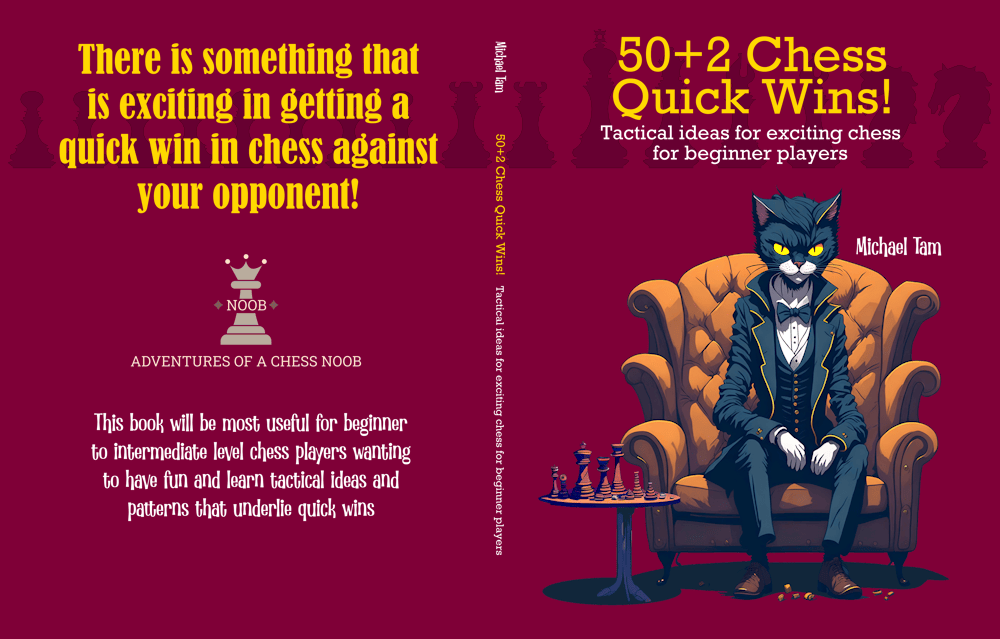
Napoleon Attack? | DESTROYED with Qf6!? ⚡ Quick Wins #103
#napoleon #quickwins #brilliant
Well, hello there! Welcome to the first chess noob Quick Wins for 2025, now #103. And for today, I’ve a rather delicious game where I won by checkmate in 11-moves with the black pieces, that was a counterattack and rout against White’s Napoleon Attack. Let’s go! 🤩
The Napoleon Attack (1. e4 e5 2. Qf3) is almost exclusively seen only against beginner players, and functions in a very similar way to the Wayward Queen Attack (1. e4 e5 2. Qh5).

![]()
The opening is named after Napoleon Bonaparte, who became leader of the French Republic from 1799-1804, and then Emperor from 1804-1814, and again in 1815. History records that Napoleon was an enthusiastic chess player, but a bit of a noob. The story goes that as Emperor, he played this opening in 1809 in Schönbrunn Palace in Vienna, against The Mechanical Turk, a curious and magical chess playing automaton in the 19th century. This was, of course, a hoax! A chess master was cleverly inside a hidden cabinet. Naturally, Napoleon lost quickly against the Turk which was operated by German-Austrian master Johann Baptist Allgaier.

![]()
The principal idea of the Napoleon Attack is to attempt a Scholar’s Mate, and White in this game did exactly this with (3. Bc4), setting up their queen and light square bishop with an attack on Black’s weak f7-square.
Notice that against the Napoleon, I developed the seemingly slower queen’s knight (2… Nc6) rather than the king’s knight (2… Nf6), which would immediately prevent a Scholar’s Mate. Why? 🤔 My idea is that I want to bait White into making the attempt! 🤩 The early queen’s knight on c6 also prepares for a very powerful Nd4 counterattack. The approach that I like is to flip the script. Against White’s early attack, I push back with an attack of my own as we’ll see, we’ll rout Napoleon with a crushing defeat – his metaphorical Battle of Waterloo!
On turn 3, the most solid move for Black is to develop the other knight (3… Ng6) but I’ve pointed out in another video on the Napoleon, that (3… Qf6!?) is a perfectly good move, especially from a psychological perspective at the beginner-intermediate level. In essence, it forces a question has been asked about the status of the queens. If White initiates a trade of queens (4. Qxf6 Nxg6), then we simply enter a queen-less game with Black winning advantage in development. The correct move for White is to simply maintain the tension by avoiding another queen move, but this deliberate inaction isn’t consistent with the commitment of rapid action implied in the Napoleon Attack!
Against the probing move, White immediately makes a serious mistake with (4. Qb3). I can see the logic – White didn’t want to trade queens and wanted to keep their queen in play. Their queen on b3 seems to form a battery with their bishop attacking the f7-pawn. However, we now spring (4… Nd4!) and once again, White’s queen is under attack and their queen-bishop battery just isn’t quick enough to be used!
White moves their queen yet another time (5. Qd3), out of the attack and defending their c2-pawn from my knight (which would come with an absolute fork of the king and a1-rook).
On turn 5, Black’s most accurate move is (5… Qg6) with an attack on White’s g2-pawn, but (5… Bc5!?) is a very tricky move that sets up a delicious trap! By far, White’s most common response is (6. c3??) to kick the d4-knight, but it’s a blunder! Black now has the brilliant move (6… Nc2+!!) with check, which also reveals the dark square diagonal to the c5-bishop! The tables of turned and it is now Black who has queen and bishop staring at the f2-pawn!
White naturally captures my knight with their queen (7. Qxc2) and this deflects their queen from the defence of her king. The following turns see my bishop pair and queen mercilessly launch a coordinated strike on White’s kingside. On turn 11, White attempts to counterattack my queen with (11. Rg1??), but they forgot that their defending e2-knight was pinned by my g4-bishop! So, (11… Qxg1#), good game, GG!
Game: https://www.chess.com/analysis/library/2xQRtveTpr
![]()
Learn more about the Romantic style in “Become a Chess Assassin! Learn to play the best chess opening attacks”.




